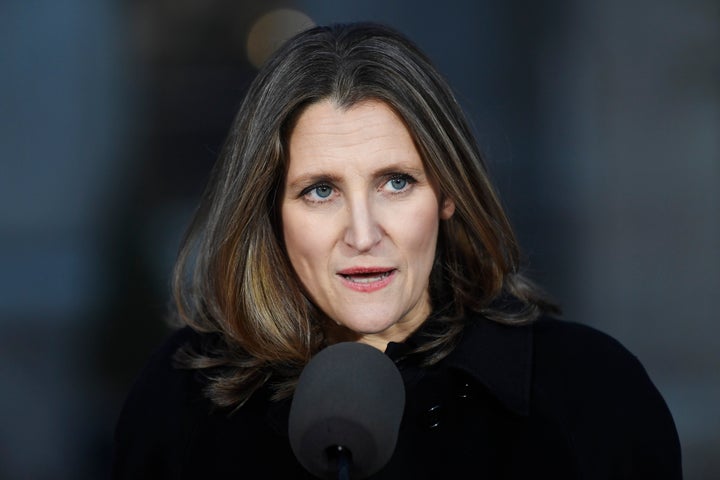Among the many changes Prime Minister Justin Trudeau brought with Wednesday’s cabinet shuffle, Chrystia Freeland is no longer in charge of foreign affairs. Instead, she is Canada’s new deputy prime minister as well as intergovernmental-affairs minister.
But what does the deputy prime minister do?
The role was first introduced when Trudeau’s father, Pierre Trudeau, was prime minister. The senior Trudeau named Allan J. MacEachen deputy prime minister in 1977 to commemorate his many years of public service.

Including Freeland, Canada has had 10 deputy prime ministers. Prior to Freeland’s appointment, the most recent person to hold the position was Anne McLellan in 2006 as part of Paul Martin’s Liberal government. Other notable politicians who held the role include outspoken and often combative former cabinet minister Sheila Copps, former prime minister Jean Chrétien and former Quebec premier Jean Charest.
While the role has remained largely ceremonial since its debut, “the prime minister may assign specific tasks in conjunction with the title,” the government’s website explains. Past deputy prime ministers have represented the government at events, answered questions for the prime minister during Question Period and played important policy roles. With the exception of Herb Gray, under Jean Chrétien, all deputy prime ministers have also held a cabinet position with a portfolio.
Hypothetically, if something were to happen to the prime minister or they were to step down while in office, the deputy prime minister would take over as acting prime minister. Legally, the Governor-General could then appoint an interim prime minister — with all the same powers as the prime minister — to lead the country. A party leadership convention would then take place to appoint a new leader and therefore prime minister for the duration of that Parliament.
Second-in-command
Freeland’s new role as intergovernmental-affairs minister may have seemed like a demotion if not for the addition of her title as deputy prime minister. Instead, her role as Trudeau’s second-in-command positions her as one of the top candidates to take over the Liberal party after Trudeau.
Despite that, previous deputy prime ministers haven’t necessarily been successors to their leaders — though Copps and John Manley both ran for party leadership, and Chrétien and Charest both won it.
In the absence of an official deputy prime minister, the order of cabinet precedence determines who steps in for the prime minister in the event that he is absent from duties like Question Period or is away from Parliament, iPolitics reported. For Trudeau’s first term, this role was taken by former public-safety minister Ralph Goodale. In the current cabinet, following Trudeau and Freeland, the next person on the list would be Veterans Affairs Minister Lawrence MacAulay.
It remains to be seen what special duties Trudeau will assign to Freeland. With her Albertan roots — she represents Toronto’s University-Rosedale riding but was born in Peace River, Alta. — it’s likely the Liberal leader hopes to quell tensions in Western Canada and move forward with Conservative premiers. She will also continue to steer the ship on NAFTA/USMCA, the trade deal she spent months negotiating with the U.S. and Mexico as foreign-affairs minister.
Correction: A previous version of this story stated Chrystia Freeland was the MP for Toronto Centre. This was her former riding. She’s now the MP for University-Rosedale.